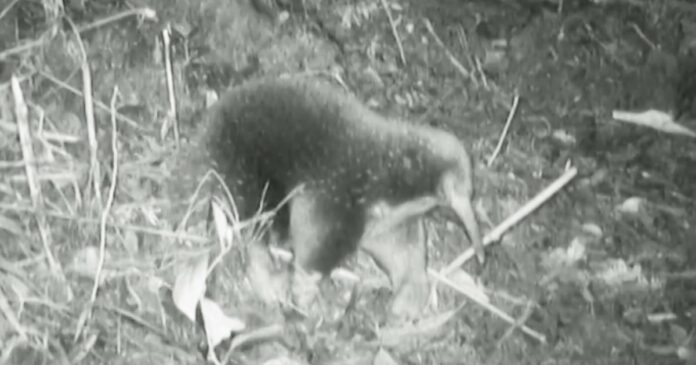An expedition through an unpredictable, perilous mountain range in Indonesia’s province of Papua led to the rediscovery of a critically endangered egg-laying mammal that hasn’t been seen for more than 60 years.
For the researchers of Expedition Cyclops, Attenborough’s Long-beaked echidna — a bizarre-looking, quill-covered creature with powerful digging feet — is a symbol of the biodiversity that can be rediscovered in Indonesia’s Cyclops Mountains.
On a nine-week expedition, a 25-person battled malaria and earthquakes, and one student researcher even had a leech stuck in their eye for 33 hours.
“Climbing those mountains I like to think of as climbing a ladder whose rungs are made of rotting wood, with rails cladded in spikes and thorns, and a frame shrouded by sunken vines and falling rocks,” said team leader James Kempton of Oxford.
The less than 90-square-mile mountain range has been subject to illegal hunting for years. It’s the only habitat for Attenborough’s Long-beaked echidna, which is considered critically endangered and is on the International Union for the Conservation of Nature’s Red List of Threatened Species.
Kempton’s team deployed over 30 camera traps to look for the echidna, suspecting it was around because of holes in the ground the animal uses to forage for worms. In the last images, on the last SD card, on the final day of the expedition, they finally found it.
“The first feeling was one of great relief because we had tried so hard, and thought they were there, but we needed concrete evidence for the scientific proof,” said Kempton. “That was followed by extreme euphoria.”
Kempton said the echidna’s critically endangered status is unlikely to change for a long time and is not protected under Indonesian law.
The effort to change that is among the reasons why Expedition Cyclops included more than six local partners in its research project, said Kempton. That includes indigenous groups, students, and organizations of the Indonesian government.
Kempton hopes the findings will help local partners raise funds to research and help protect the Cyclops Mountains.
The Attenborough’s Long-beaked echidna is also one of five guardians of a highly unique and fragile evolutionary history, which dates back over 200 million years, said Kempton.
Echidnas are monotremes, which means they are part of the only group of living mammals that lay eggs instead of bearing live young, he explained. There are only five existing species of monotremes: the platypus and four species of echidna.
“To a biologist, the idea that that branch could go extinct would be a great tragedy,” Kempton said. “It’s evolutionary history that can never be gained back.”
Rediscovering Attenborough’s Long-beaked echidna was only one of the goals of Expedition Cyclops. Researchers also set out to investigate the origins of the biodiversity of the Cyclops Mountains. They came back with hundreds of new insect species, at least two new species of frogs, and a new species of shrimp that lives on land and in trees.
Kempton said the Cyclops Mountains’ unique geologic origins are a huge driving force behind the region’s biodiversity. The mountain range used to be islands in the middle of the Pacific Ocean. As the Earth’s continents gradually drifted together, they collided with the mainland of New Guinea to form mountains.
Expedition Cyclops also rediscovered Mayr’s honeyeater, a species of bird not seen for 15 years.


